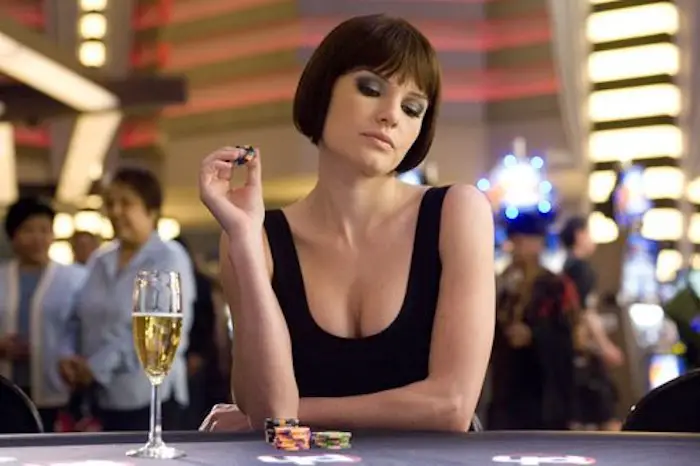
My favorite shot in “The Dark Knight” doesn’t involve Batman crashing through a window or the Bat cycle clearing a path through a row of cars — it’s The Joker at the wheel of a police cruiser, his head out the window as he enjoys the breeze. It’s a childlike moment, one that almost makes him seem sympathetic in spite of his id-driven evil; it messes with our heads a bit, which would thrill The Joker.
I love it because it not only showcase the brilliance of Christopher Nolan’s writing (with his brother) and direction, as well as Heath Ledger’s performance, but it also proves that comic book movies have finally arrived. At last we have a superhero film that’s grounded in our world. Modify Batman’s role, tweak the script a bit, and you could have one hell of a cop movie. These kinds of stories have been a staple of the Batman comics for a few decades now, and I’m amazed that it took this long for them to finally reach the big screen. I guess we needed a few writers and directors who cut their teeth on 70s and 80s comics to get a shot at these characters.
I typically spend more time discussing plot when reviewing DVDs of recent movies, but “The Dark Knight” was such a blockbuster that you don’t need me wasting time explaining the story beats of Batman’s fight against The Joker, who has aligned himself with Gotham’s organized crime elements so that he can eventually take them out and rule the roost. The plot is intricate, and Nolan isn’t afraid to take chances with the story even as he plays out the moments we all knew were coming eventually: Harvey Dent becoming Two Face, Lieutenant Gordon becoming police commissioner, and so forth. Nolan’s curveballs are mostly tossed at Batman, who is forced to make some tough decisions that don’t always get the results he wanted. He’s a fallible guy, which is why I’ve always preferred him over Superman.
The only spot where I felt the film hit a false beat was when Bruce Wayne somehow equipped all the cell phones in Gotham with Lucius Fox’s sonar invention. I realize it was necessary to get Batman into position for his final encounter with The Joker, but I don’t know he pulled it off. Did Bruce Wayne buy all cell phone carriers and tell their Gotham customers to bring their phones in for servicing? There must have been a better way to accomplish that part of the story, but I was willing to let it slide in the face of everything else. It also gave Lucius Fox some nice moments, and any time Morgan Freeman gets some screen time, the world is a better place.
And, yes, I thought Ledger’s performance is brilliant, although I wonder if the superlatives heaped on it come more from critics knowing it was his final performance and wanting him to have ended his career in a blaze of glory. Don’t get me wrong — it’s terrific work, and it goes well beyond Jack Nicholson’s caricature into much more nuanced territory. I just wouldn’t call it Ledger’s greatest performance. Sadly, I’m sure the best was yet to come.
Unfortunately, this two-disc DVD set doesn’t measure up to its subject matter’s greatness. It’s not poor enough to warrant a half-star demerit, but I was left wanting more. I wish Warner Bros. had taken a cue from Disney’s “WALL•E” set and placed the digital copy of the movie on its own disc. On “The Dark Knight,” the digital copy takes up precious space that could have been devoted to so much more, such as a discussion of Ledger’s contribution to the film and the legacy he left behind, the history of The Joker, the evolution of the story, and more.
Disc one includes the film’s trailer, along with trailers for “Batman Begins” (to flog the Blu-ray version, of course), a Batman videogame, and “Watchmen” (I’m eagerly waiting for that one). No commentary track, unfortunately.
Over on disc two, we have a pair of featurettes that cover Hans Zimmer’s score as well as the evolution of the Batman suit and the creation of the Bat cycle (also known as the Batpod), complete with lots of behind-the-scenes footage and discussions from the principal members of the cast and crew. We also get a discussion of what went into shooting certain sequences for IMAX presentation, which leads into the next extra: six key sequences in the film that were shot almost entirely with IMAX cameras; the aspect ratio shifts for the IMAX stuff. I appreciate the desire to show them to us, but they lose some impact in a home theater setting.
Finally, we have galleries of poster art and behind-the-scenes photos, all three theatrical trailers, and 46 minutes of “Gotham Tonight,” the TV news show that pops up a few times during the movie. They flesh out the film world a bit, but they’re a curiosity more than anything else.
